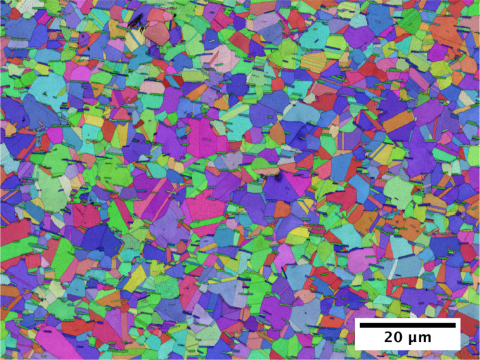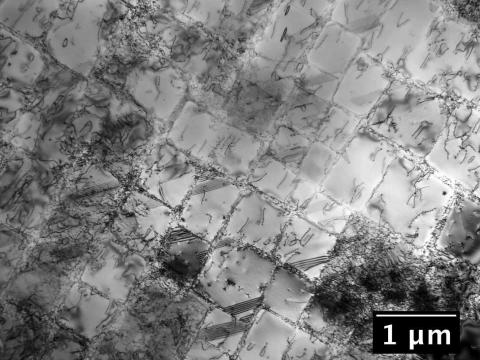The core of the UTC's research is concerned with nickel-based superalloys. These alloys exhibit exceptional high-temperature strength, creep resistance and corrosion resistance, and are the material of choice for the hottest sections of jet engines - the turbine and compressor stages. Our superalloy research can be split broadly into two categories: research concerning disc and combustor alloys (polycrystalline), and research concerning blade alloys (single crystal).
Our disc-alloy research is focussed on the characterisation and modelling of the degradation mechanisms involved in fatigue and creep, as well as the design of new alloys with improved performance and stability. Specific areas of interest include the formation of TCP phases during service, the modification of alloys using Co, Nb and Ti additions, and understanding of the effect of composition on γ/γ′ coherency strains. The development of dual-alloy discs is also being investigated.

We are also interested in the effects that production and processing routes have on the properties of disc materials. The effect of forging and heat treatment on the precipitation of δ and η phases in 718Plus is an example of this work (a 718Plus EBSD map is shown above this paragraph).
Direct-laser deposition (DLD) of polycrystalline alloys is also a key research focus, as it allows for the manufacture of combustor components with complex geometries. Our work aims to optimise the design of new alloys for DLD and to characterise the resulting novel DLD microstructures.

For turbine blade alloys, we are interested in characterising yield behaviour and mechanisms of creep and fatigue degradation, and modelling these responses using a dislocation-based approach (the micrograph above this paragraph shows dislocation arrays in CMSX-4). The coating of blade materials is also a key area of interest, with investigations continuing into the growth of oxide layers on blade alloys and the damage of these layers during service. A project understanding and mitigating surface-related defects during the casting of turbine blades is also being undertaken.

